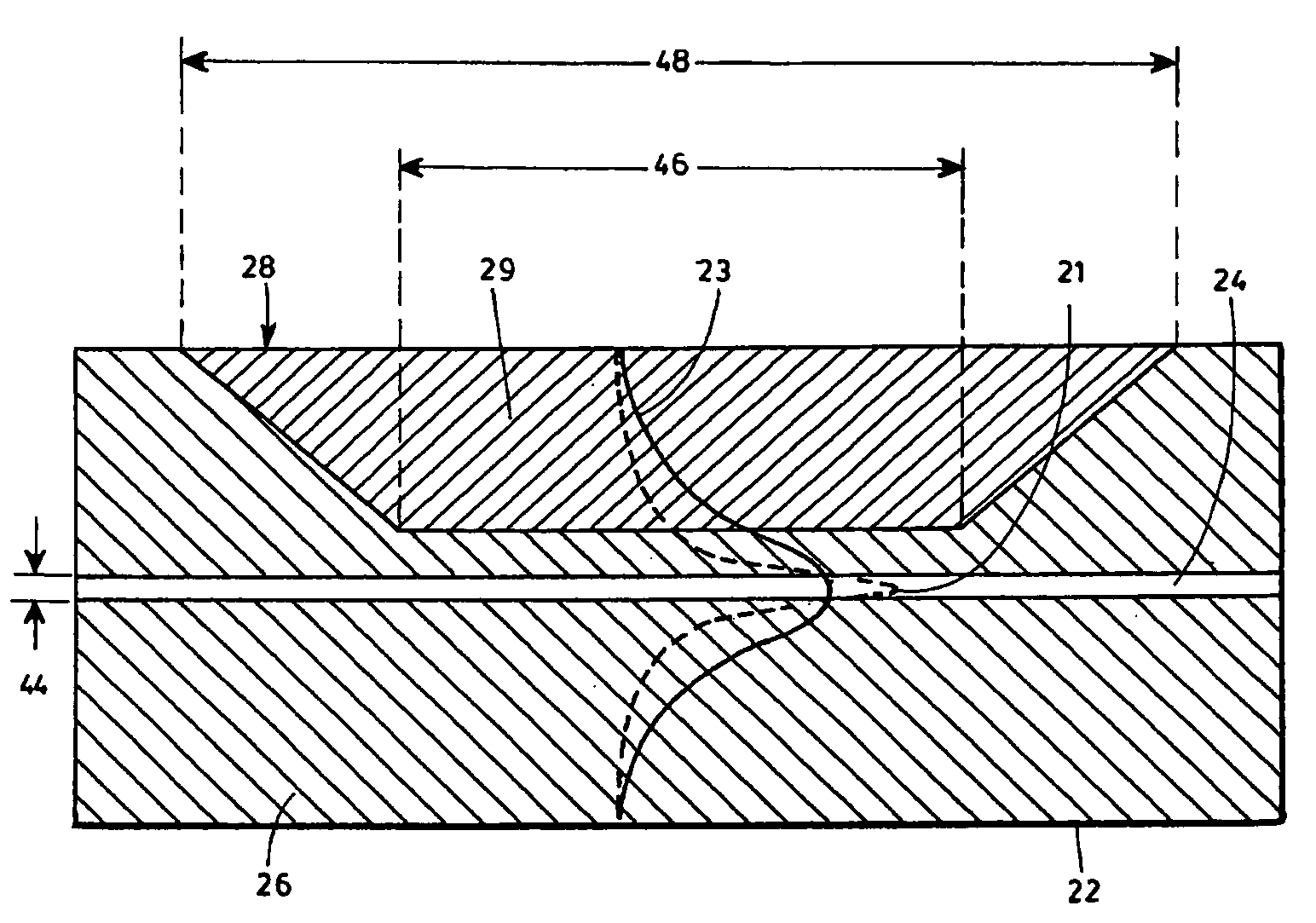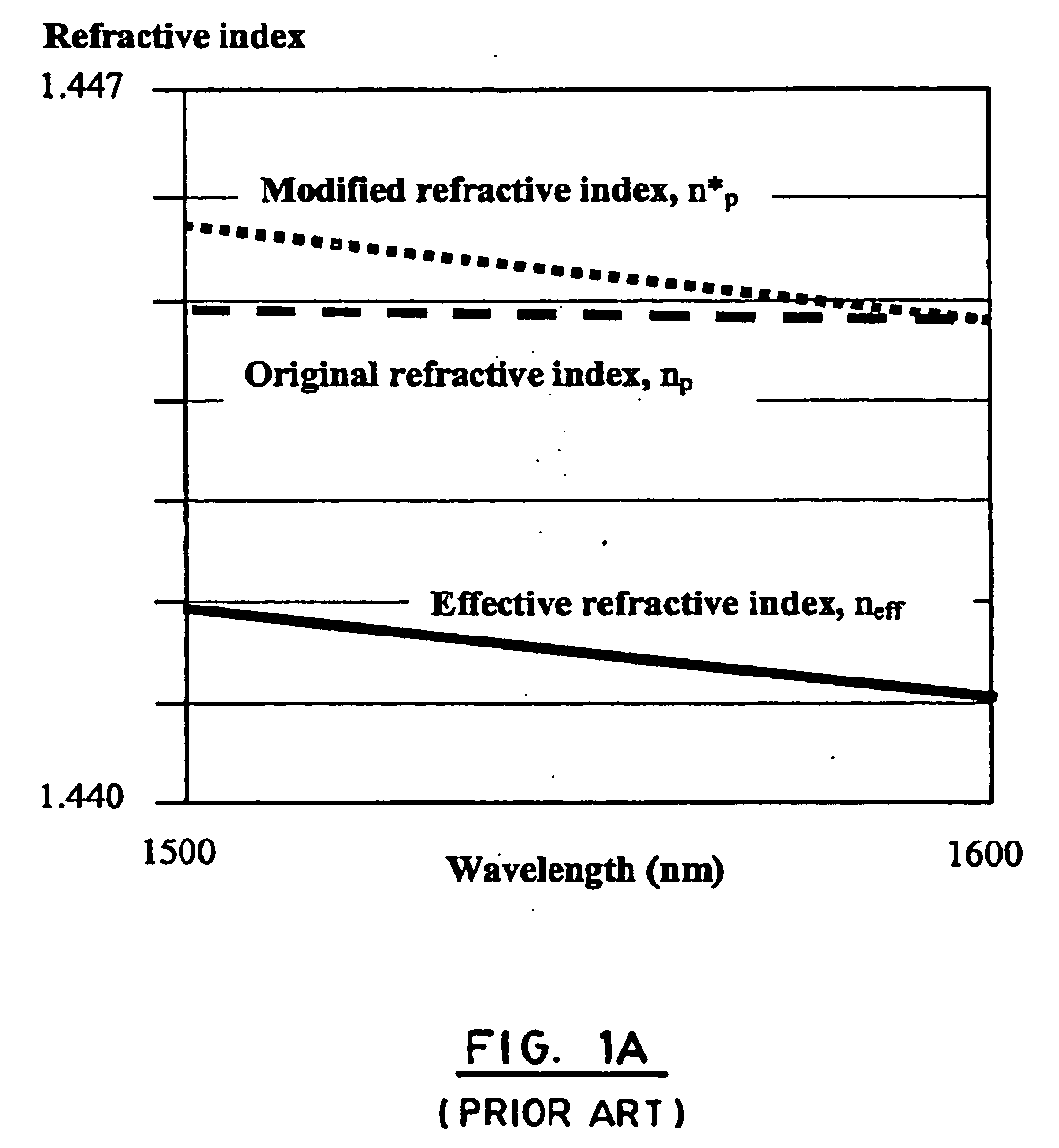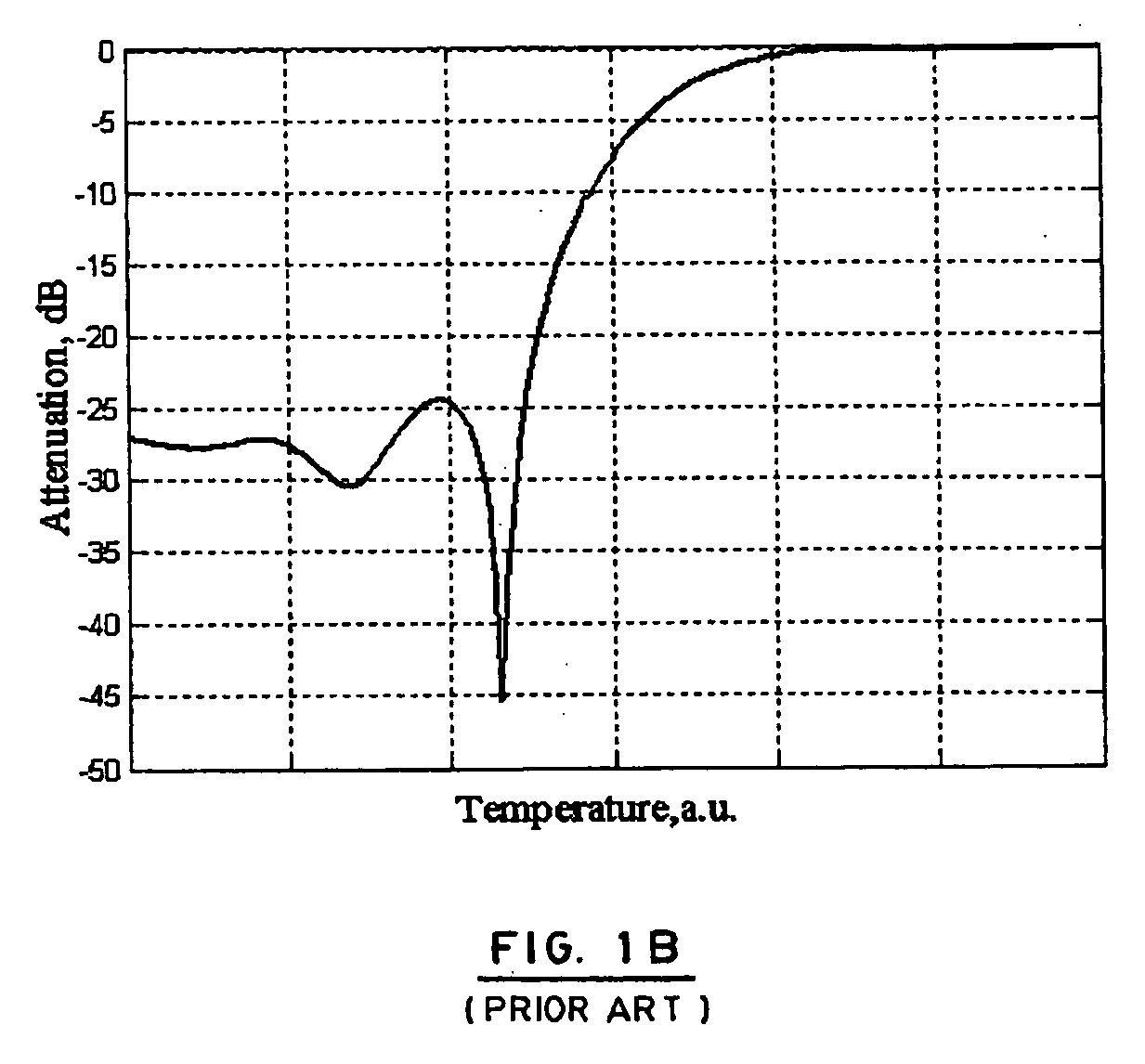Optical device and method for the spectrally-designed attenuation of a multi-wavelength light signal
a multi-wavelength light signal and optical device technology, applied in the field of optical devices, can solve the problems of significant power fluctuations, special waveguide design and fabrication, and important problems, and achieve the effects of improving the tilt of wavelength dependent loss, increasing the attenuation range, and reducing insertion loss and attenuation rippl
- Summary
- Abstract
- Description
- Claims
- Application Information
AI Technical Summary
Benefits of technology
Problems solved by technology
Method used
Image
Examples
example
[0088] 0.050 g of 1.1 micron sized polybeads polystyrene microsphere in powder form was dispersed as guest in a 1 g fluorinated polymer thermo-optic (TO) host matrix. The mixture allows to stirring at 25° C. for 2 h. The mixture was used as a cladding material for an optical fiber of partially removed cladding. The reduction of the cladding was made by a local chemical etching. The light propagating in the optical fiber, that contains the mixture as cladding, was leaking out from the core because of the high average refractive index of the composite material at room temperature. The heating of the composite material (TO material with PS microspheres) brings to a gradual increase of light transmission achieving an insertion loss below 0.2 dB. The wavelength dependent loss (WDL) of such a device appears to be greatly improved (below 0.5 dB) with respect to the case when only the original TO polymer is used without the PS microsphere.
[0089] In summary, the present invention addresses ...
PUM
 Login to View More
Login to View More Abstract
Description
Claims
Application Information
 Login to View More
Login to View More - R&D
- Intellectual Property
- Life Sciences
- Materials
- Tech Scout
- Unparalleled Data Quality
- Higher Quality Content
- 60% Fewer Hallucinations
Browse by: Latest US Patents, China's latest patents, Technical Efficacy Thesaurus, Application Domain, Technology Topic, Popular Technical Reports.
© 2025 PatSnap. All rights reserved.Legal|Privacy policy|Modern Slavery Act Transparency Statement|Sitemap|About US| Contact US: help@patsnap.com



